Hoy les hablaré de una planta que cada parte de ella es prodigiosa, lo digo por sus múltiples usos y aportes, esa planta es el onoto. El onoto (Bixa orellana), conocido también con otra infinidad de nombres (achiote, achote, urucú, pumacoa, bija, etc.) es una planta que se cultiva en regiones intertropicales de América y es principalmente famosa por su mágico aceite el cual se utiliza frecuentemente en la cocina, pero aparte de eso, el onoto aporta muchos más usos y es en sus propiedades medicinales donde más aplique mi investigación, la cual les será compartida mediante este post.
Today I will talk about a plant that each part of it is prodigious, I say it for its multiple uses and contributions, that plant is the onoto. The anntto (Bixa orellana), also known by an infinity of other names (achiote, achote, urucú, pumacoa, bija, etc.) is a plant that is grown in intertropical regions of America and is mainly famous for its magical oil which is It is used frequently in the kitchen, but apart from that, the annatto has many more uses and it is in its medicinal properties where my research applies the most, which will be shared through this post.
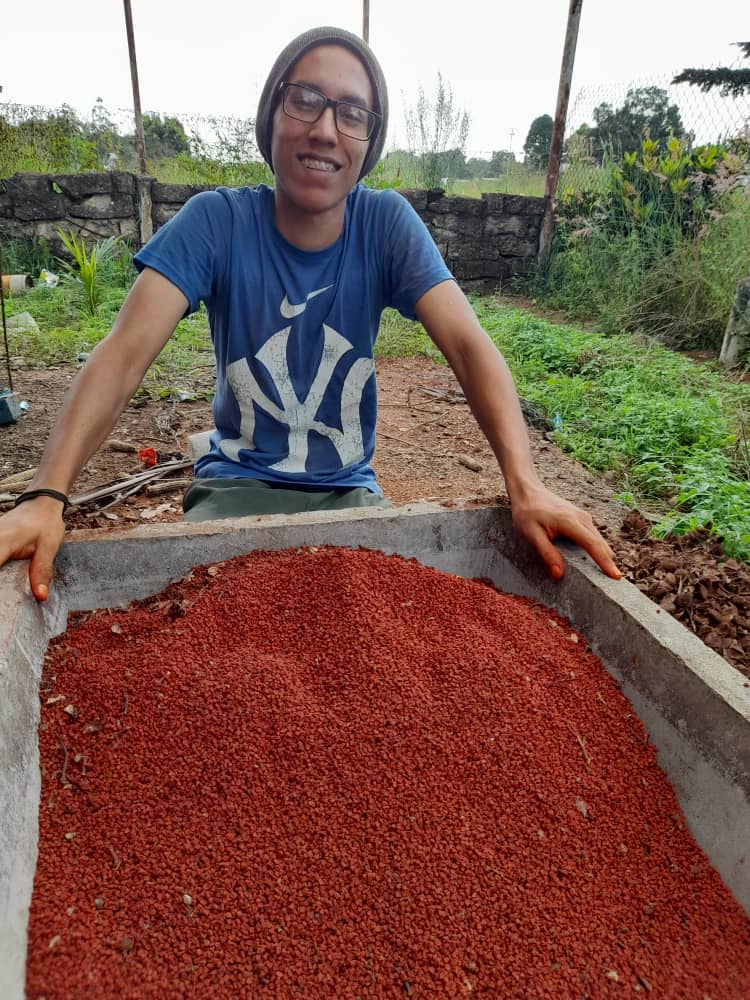
Primero les quiero mencionar lo importante que es el onoto en mi familia, ya que desde muchos años atrás nos dedicamos al cultivo de dicha planta, es por eso que les dejaré unas breves instrucciones acerca de cómo la cultivamos, como cosechamos su fruto y como extraemos su tan preciada semilla, la cual es la que nos aporta su útil aceite y su colorante.
First I want to mention to you how important the annatto is in my family, since for many years we have been dedicated to the cultivation of this plant, that is why I will leave you some brief instructions about how we cultivate it, how we harvest its fruit and how we extract it. its so precious seed, which is what gives us its useful oil and coloring.
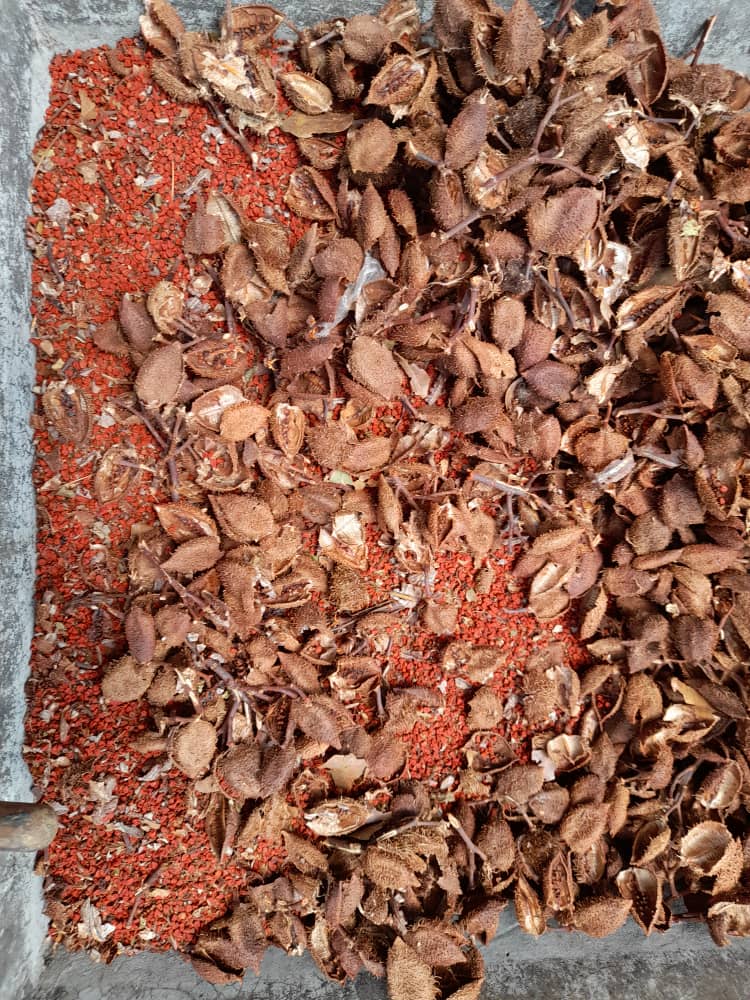
La manera de empezar es por la realización de un semillero, La selección de la semilla se hace de las cápsulas más grandes, porque es recomendado utilizar las de mayor tamaño. Un alto porcentaje de germinación depende de que la siembra sea pronto. Las semillas se siembran a una profundidad cercana a 1 cm, hasta que la planta nazca se debe regar todos los días y proteger del contacto directo con la luz solar. A los cuatro meses ya la planta alcanza un tamaño suficiente para ser trasplantada, es elemental que la fecha de trasplante sea en época de lluvia, es por eso que en familia siempre se tiende a realizar el semillero a principio de año para que cuando se vaya trasplantar las plantas sea en mayo, el mes donde inicia la temporada de lluvia aquí en mi país. Luego de que la planta ya esté en su lugar definitivo, nos tendremos que preocupar por fertilizarla adecuadamente, limpiar la maleza y combatir las pestes (las más comunes son manchas foliares y el chinche de la panícula) para que no obstaculicen el desarrollo de la planta. Otra cosa que también debemos hacer es podar las ramas viejas de las plantas, ya que cuando alcanzan gran tamaño pueden estorbar en el proceso de cosecha. Ya a los 18 meses la planta empieza a florecer, su flor es de color rosa y es muy bella, después de los 20 meses ya empieza el periodo de producción, y la planta puede durar hasta 18 años produciendo.
The way to start is by creating a seedbed. The selection of the seed is made from the largest capsules, because it is recommended to use the largest ones. A high percentage of germination depends on sowing early. The seeds are sown at a depth close to 1 cm, until the plant is born it must be watered every day and protected from direct contact with sunlight. After four months the plant reaches a sufficient size to be transplanted, it is essential that the transplant date is in the rainy season, that is why the family always tends to make the seedbed at the beginning of the year so that when it leaves transplanting the plants is in May, the month where the rainy season begins here in my country. After the plant is in its final place, we will have to worry about fertilizing it properly, cleaning the weeds and fighting pests (the most common are leaf spots and the panicle bug) so that they do not hinder the development of the plant. . Another thing that we must also do is prune the old branches of the plants, since when they reach large size they can interfere with the harvesting process. Already at 18 months the plant begins to bloom, its flower is pink and very beautiful, after 20 months the production period begins, and the plant can last up to 18 years producing.
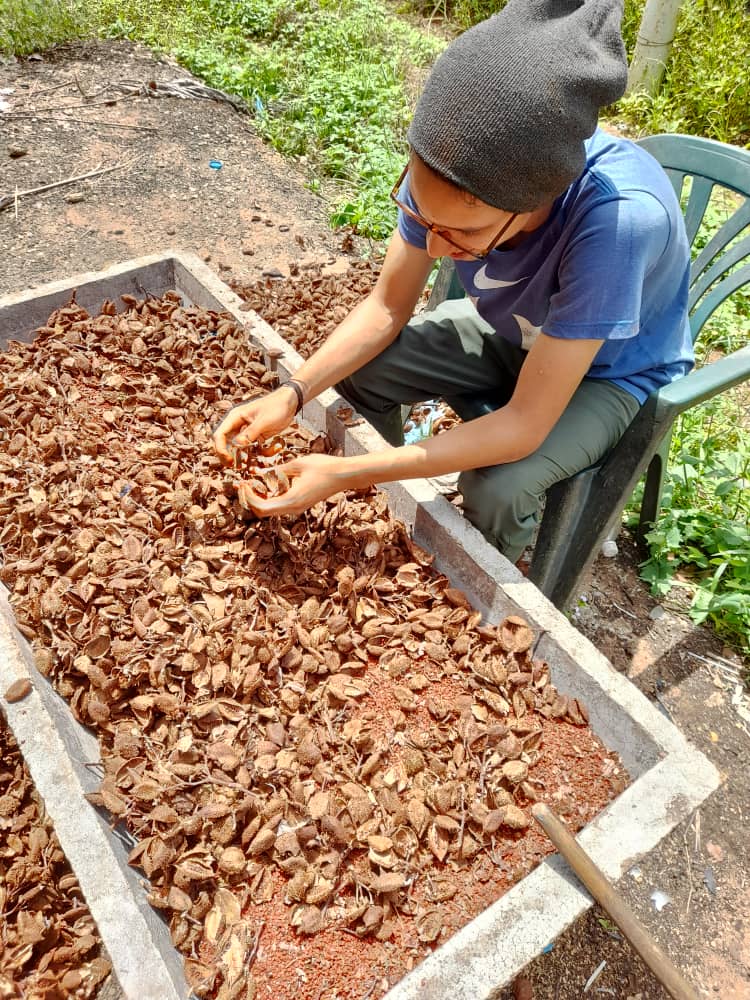
En cuanto a la cosecha, el momento más indicado es cuando las capsulas se secan y se abren, una vez cosechado se ponen a secar al sol por 3 o 4 días, cuando esté bien seco se colocan dentro de un saco y se golpea y machaca el saco para así conseguir que los granos se despeguen de las capsulas, luego se procede a separar las semillas de los restos de las cascaras para finalizar el proceso de extracción. Todos estos procesos vienen siendo realizados por mi familia desde hace años hasta el punto de perfeccionar cada técnica.
As for the harvest, the most suitable moment is when the capsules are dried and opened, once harvested they are put to dry in the sun for 3 or 4 days, when it is very dry they are placed inside a bag and beaten and crushed. the sack in order to get the grains to detach from the capsules, then the seeds are separated from the remains of the shells to finish the extraction process. All these processes have been carried out by my family for years to the point of perfecting each technique.
La utilidad del onoto es inmensa, a continuación destacaré su provecho en la gastronomía y en lo que a la medicina respecta.
The usefulness of the annatto is immense, next I will highlight its benefit in gastronomy and as far as medicine is concerned.
En la gastronomía, debido a su cobertura resinosa y aceitosa que contiene un pigmento conocido como annatto, es empleado como colorante alimenticio, ya sea en pasta, aceite y hasta la misma semilla, puede ser molida o también entera, ya que si pones las semillas a hervir en aceite, esta desprende su tinte rojo en él y así queda listo para dar color a tus comidas. Se utiliza de colorante para mantequilla, quesos, carnes, arroz, guisos, sopas y también como condimento. Su color rojizo hizo que en el pasado se le conociera como “el azafrán de los pobres”. Debo mencionar que el onoto juega un papel fundamental en la elaboración del la Hallaca, el famoso plato típico venezolano, y según lo que me contó un amigo que vive en Perú, el onoto es el condimento principal del reconocido platillo llamado “Pollada” ya que le aporta su característico color rojo.
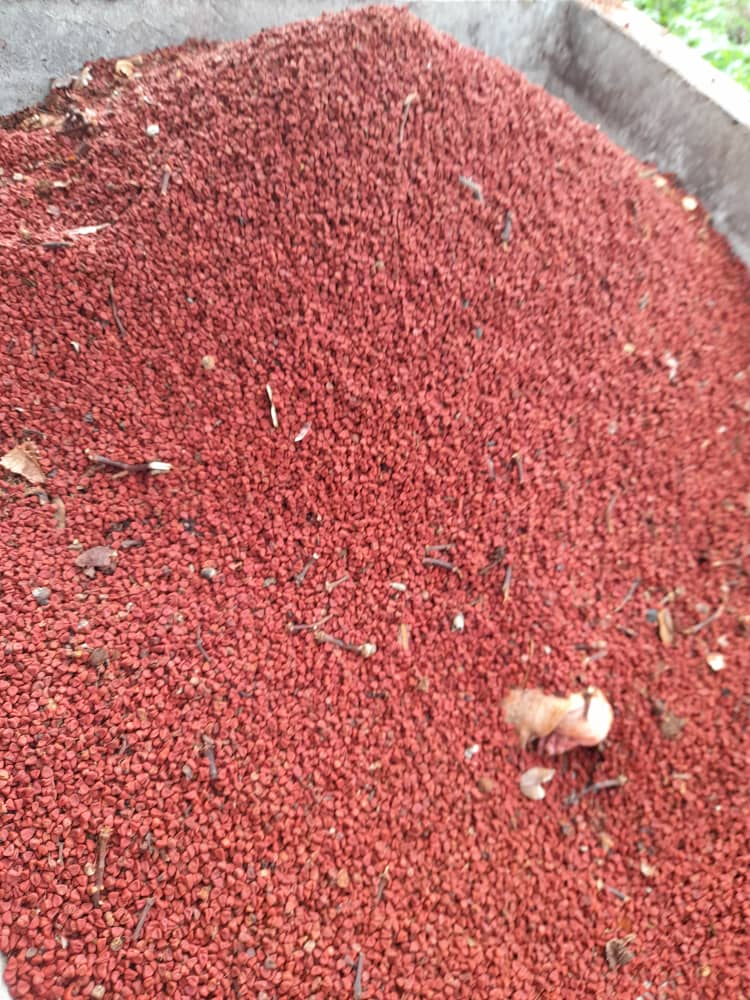
In gastronomy, due to its resinous and oily coating that contains a pigment known as annatto, it is used as a food coloring, either in paste, oil and even the seed itself, it can be ground or also whole, since if you put the seeds To boil in oil, it gives off its red tint in it and thus it is ready to color your meals. It is used as a coloring for butter, cheeses, meats, rice, stews, soups and also as a condiment. Its reddish color made it known in the past as "the saffron of the poor." I should mention that annatto plays a fundamental role in the elaboration of la Hallaca, the famous Venezuelan typical dish, and according to what a friend who lives in Peru told me, annatto is the main condiment of the renowned dish called “Pollada” since It gives it its characteristic red color.
En cuanto al uso medicinal, es enorme su utilidad, ya que tanto las semillas como las diferentes partes de la planta son aprovechadas, sus propiedades terapéuticas son expectorante, antioxidante, antigonorroeico, purgante, desinflamatorio, hipoglicemiante, diurético, antiséptico, cicatrizante, antibiótico, antiparasitario… en fin, muchas.
Regarding medicinal use, its usefulness is enormous, since both the seeds and the different parts of the plant are used, its therapeutic properties are expectorant, antioxidant, antigonoreic, purgative, anti-inflammatory, hypoglycemic, diuretic, antiseptic, healing, antibiotic, antiparasitic ... well, many.
Las hojas
Comenzare hablando de las hojas las cuales se usan contra dolores de cabeza, malestares de garganta, afecciones respiratorias, dolores renales, fiebre, para el dolor de estomago, para desinflamar, como purgante y para bajar la azúcar en la sangre.
Las hojas hervidas sirven de antídoto para combatir la intoxicación que causa consumir yuca amarga (también conocida como yuca abrava). La infusión de las hojas controla inflamaciones causadas por hongos y también para curar la prostatitis.
Leaves
I will start talking about the leaves which are used against headaches, sore throats, respiratory conditions, kidney pain, fever, for stomach pain, to reduce inflammation, as a purgative and to lower blood sugar.
The boiled leaves serve as an antidote to combat poisoning caused by consuming bitter yucca (also known as yuca abrava). The infusion of the leaves controls inflammation caused by fungi and also to cure prostatitis.
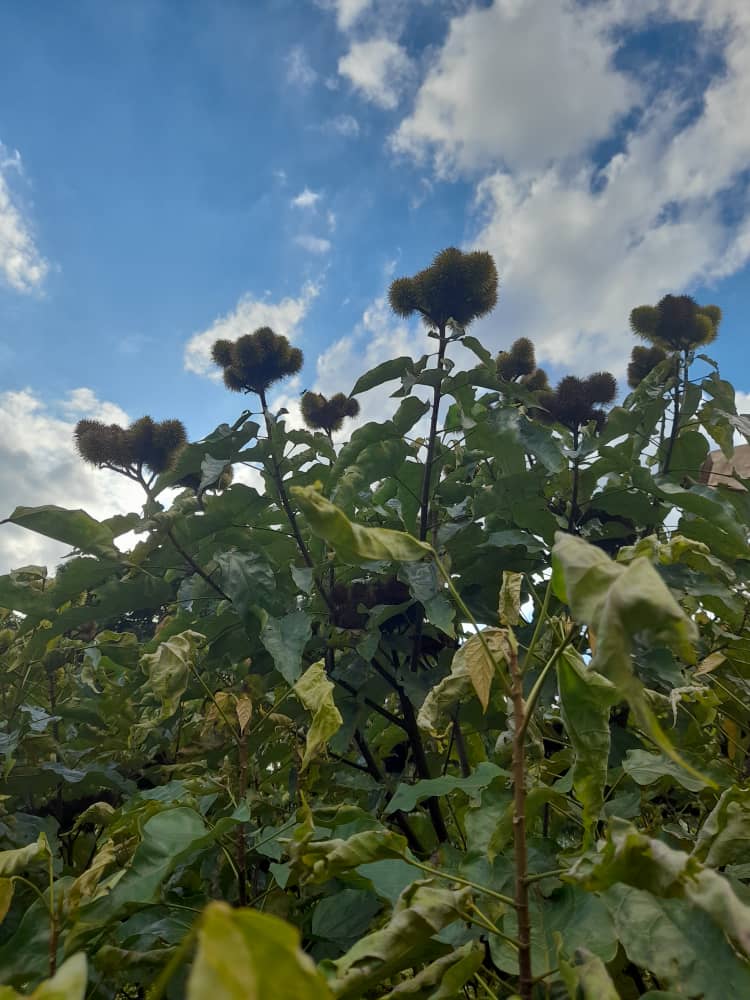
Semillas
Las semillas molidas se usan frecuentemente contra dolencias de riñones, viruela, sarampión, para bajar la fiebre; además la infusión de la semilla también sirve como cicatrizante y para desinflamar quemaduras.
Seeds
The ground seeds are frequently used against kidney ailments, smallpox, measles, to lower fever; In addition, the infusion of the seed also serves as a healing agent and to reduce inflammation of burns.
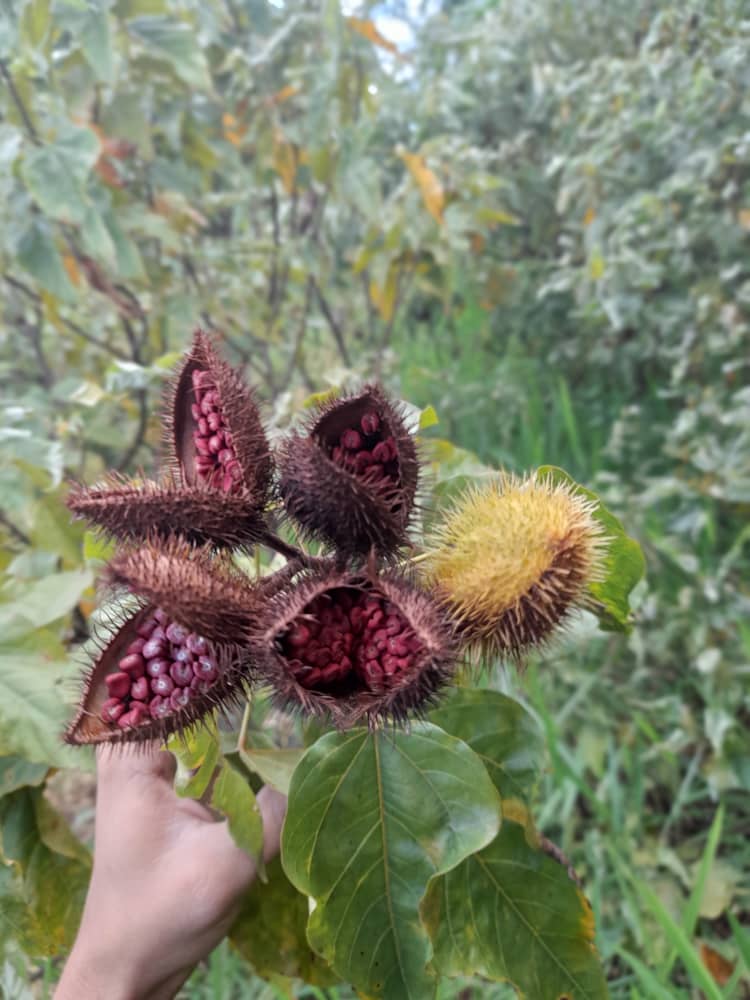
La planta y la raíz
Se puede colocar la planta en agua por unas 10 horas para crear un remedio para combatir infecciones en la piel. Lo mismo se hace con la raíz también para combatir enfermedades de la vesícula.
The plant and the root
You can place the plant in water for about 10 hours to create a remedy to fight skin infections. The same is done with the root also to combat gallbladder diseases.
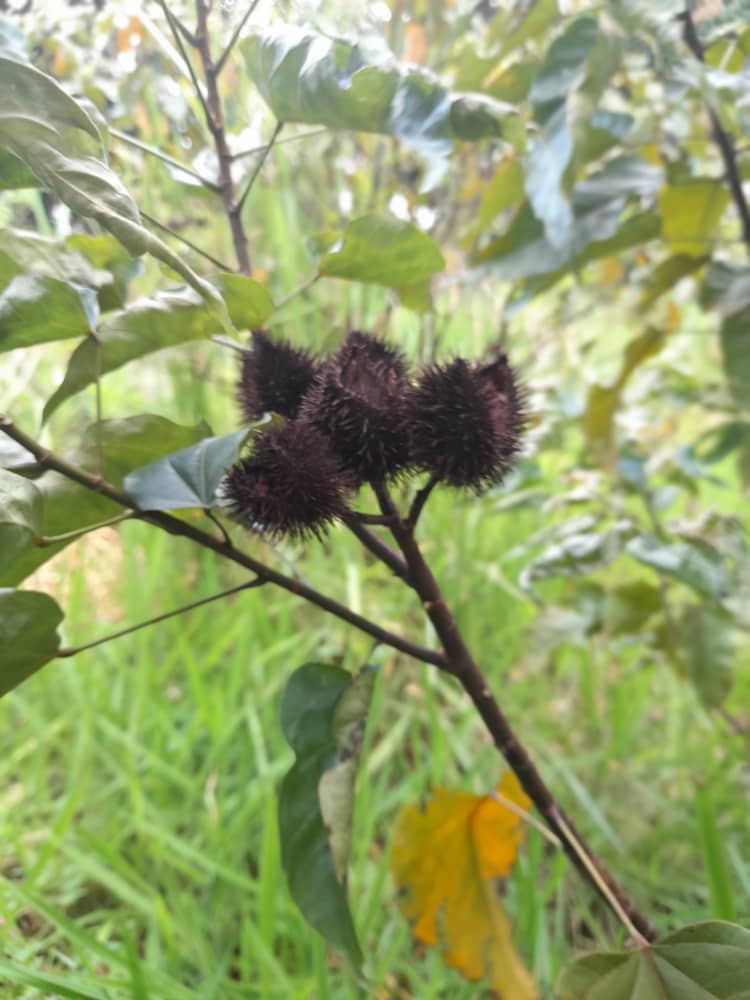
En fin son muchas las funciones y propiedades que tiene el onoto, además del sin fin de enfermedades y males que puede tratar y combatir. Fueron los aborígenes del continente americano quienes emplearon por primera vez sus propiedades curativas, hay que mencionar que el onoto contiene vitamina A y vitamina C, al mismo tiempo aporta minerales como el calcio, fosforo, hierro y proteína vegetal. Los nativos también usaban la capa cerosa de las semillas como repelente de insecto y pintura facial.
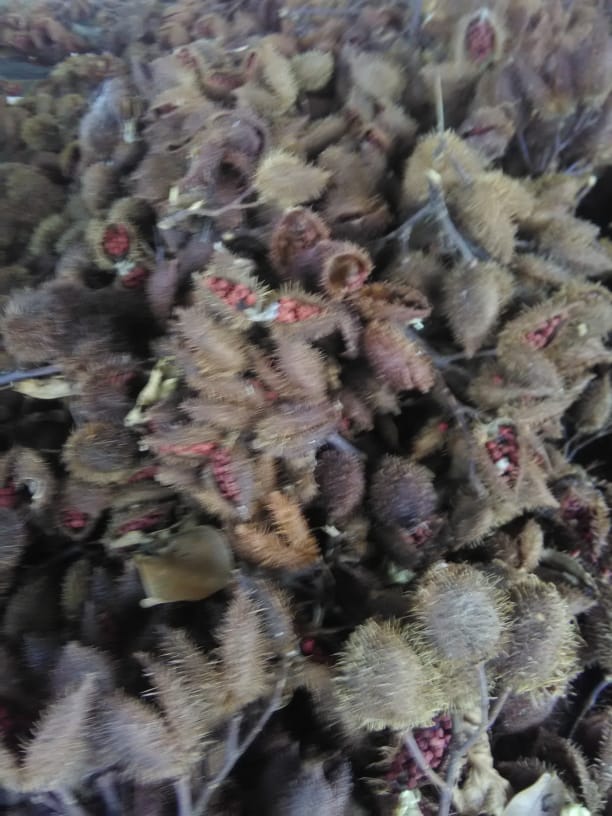
Como ven son muchos los aportes y eso que no hable sobre el aceite, el cual es usado hasta por empresas de cosméticos para la elaboración de bálsamos labiales, protectores solares, lociones, cremas, etc. Todo esto hace que mi familia y yo nos sintamos orgullosos de cultivar tal preciado tesoro natural.
In short, there are many functions and properties that the annatto has, in addition to the endless diseases and ills that it can treat and combat. It was the aborigines of the American continent who used its healing properties for the first time, it should be mentioned that annatto contains vitamin A and vitamin C, at the same time it provides minerals such as calcium, phosphorus, iron and vegetable protein. The natives also used the waxy coating of the seeds as an insect repellent and face paint.
As you can see, there are many contributions and that does not talk about the oil, which is used even by cosmetic companies to make lip balms, sunscreen, lotions, creams, etc. All of this makes my family and I proud to cultivate such a precious natural treasure.
Hasta aquí llega mi redacción sobre esta grandiosa planta proveniente de la mítica selva amazonas, espero que este post haya sido de provecho para el lector y ojala que los tips sobre la manera de cultivarlo sirva para guiar al que se esté iniciando en el mundo del onoto, o en su defecto que valga para incentivar a quienes no lo hayan hecho aun.
My writing about this great plant from the mythical Amazon jungle ends here, I hope this post has been of benefit to the reader and I hope that the tips on how to grow it will serve to guide those who are starting in the world of onoto , or failing that it is worth to encourage those who have not done it yet.

Fotos de mi propiedad.
¡Felicitaciones!
1. Invierte en el PROYECTO ENTROPÍA y recibe ganancias semanalmente. Entra aquí para más información.
3. Suscríbete a nuestra COMUNIDADEntra aquí para más información sobre nuestro trail., apoya al trail de @Entropia y así podrás ganar recompensas de curación de forma automática.
4. Creación de cuentas nuevas de Hive aquí.
5. Visita nuestro canal de Youtube.
Atentamente
El equipo de curación del PROYECTO ENTROPÍA
Gracias por compartir ese conocimiento que es parte de ti.Felicidades @elianmoisesp una clase completa sobre el cultivo y cosecha del onoto. Cuan importante debe ser para tu familia todo este proceso. Igual las bondades de esta planta.
Saludos.
Gracias @mercmarg por apoyarme al leer mi post!n
Saludos @elianmoisesp
Congratulations @elianmoisesp! You have completed the following achievement on the Hive blockchain and have been rewarded with new badge(s) :
Your next target is to reach 1500 upvotes.
You can view your badges on your board and compare yourself to others in the Ranking
If you no longer want to receive notifications, reply to this comment with the word
STOPCheck out the last post from @hivebuzz:
Support the HiveBuzz project. Vote for our proposal!